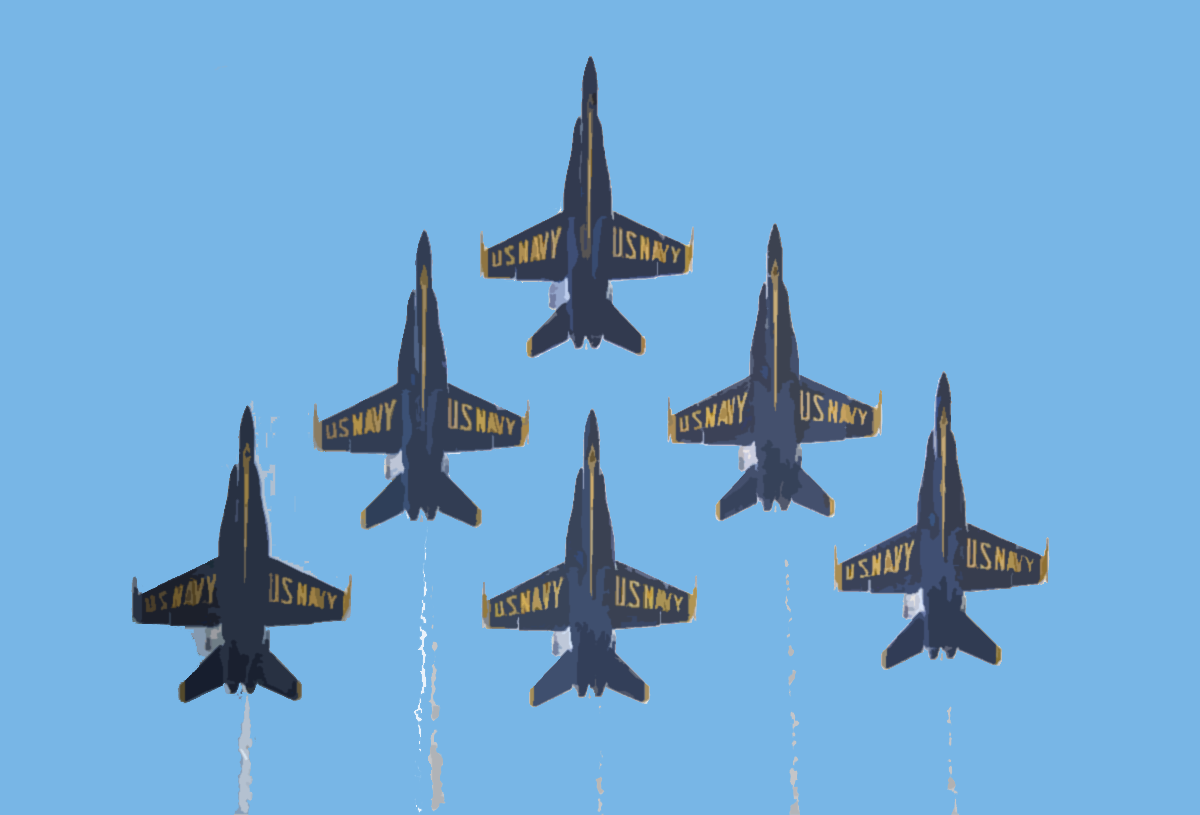This episode of the See America Podcast was written and hosted by Jason Epperson, and narrated by Abigail Trabue.
Listen Below:
Introduction:
During the twentieth century, few military organizations played a more crucial role than Naval Aviation. In war at sea, eclipsing the battleship as the decisive weapon, aircraft carriers projected their powerful air wings over vast expanses of water, striking with surprise at enemy fleets and land bases, then disappearing with equal swiftness. In times of peace, the carrier and her battle group provided American political leaders a flexible, always ready and potent way to respond to regional crises wherever and whenever vital American interests were threatened. “Where are the carriers?” has been the first question asked by American presidents at the start of every national security crisis since the end of World War II.
Naval Aviation has also been at the cutting edge of aerospace expeditions, from the first successful crossing of the Atlantic by an aircraft, exploration of the Arctic and Antarctic, and journeys of discovery into outer space. The common denominator for those who participated in this exciting history was their training in a sleepy little Southern city on the Gulf of Mexico, the site of the nation’s first naval air station.
This week, the National Naval Aviation Museum, home to the Blue Angels, in Pensacola, Florida.
Since 1914, fledglings have tested their mettle against the demands of flying aircraft in Pensacola. They learned the unique skills required to fly from ships at sea, find distant targets and return to their moving, rolling, and pitching “airfield,” often in bad weather and frequently at night. So it makes perfect sense that Pensacola has a world-class Museum to commemorate its place, and that of Naval Aviation, in history.
The National Naval Aviation Museum is, quite simply, the best Museum on a single subject I’ve ever been to. Our family returns year after year to this incredible institution to marvel at the fighter jets, the aircraft carrier models, and of course, to watch the fabulous Blue Angels practice.
The Navy’s famous demonstration team holds winter training in California, where new and returning pilots hone skills two practice sessions per day, six days a week, to fly the 120 training missions needed to perform the Blue Angel’s famous show safely. Separation between the formation of aircraft and their maneuver altitude is gradually reduced over the course of about two months in January and February. The team then returns to their home base in Pensacola in March and continues to practice throughout the show season. A typical week during the season has practiced on Tuesday and Wednesday mornings, and they’re held right at the Naval Aviation Museum, free to the public. It’s the full show, with bleachers, narration, merchandise, the whole bit.
The team then flies to its show venue for the upcoming weekend on Thursday and flies a “practice” airshow at the show site on Friday. The main airshows are conducted on Saturdays and Sundays, with the team returning home to Pensacola on Sunday evenings after the show. Monday is an off day for the Blues’ demonstration pilots and road crew. Extensive aircraft maintenance is performed on Sunday evening and Monday by maintenance team members.
History of the Blue Angels:
Fleet Admiral Chester W. Nimitz, while serving as Chief of Naval Operations, formed the U.S. Navy Flight Demonstration Team as a means to expose the American public to naval aviation, which had come of age during World War II. This was deemed particularly important in an era in which the roles and missions of the armed forces were the subject of vigorous debate.
The Blue Angels performed their first air show at Naval Air Station Jacksonville, in June 1946, and their initial show season consisted of 31 demonstrations. The first flight leader was Lieutenant Commander Roy M. “Butch” Voris.
The first use of the name “Blue Angels” occurred at a show in Omaha, Nebraska, in July 1946. The name came from an advertisement in the New Yorker magazine for a nightclub called the “Blue Angel.” Prior to that, the name proposed for the team had been the Blue Lancers.
The first airplane flown by the Blue Angels was the F6F Hellcat, the same plane the pilots would have flown during the war. They also operated an SNJ Texan for a time, painted to look like a Japanese Zero, for use in a dogfighting demonstration
The F8F Bearcat followed the Hellcat and was the last propeller-driven aircraft operated by the Blue Angels. The first jet flown by the Blues was the F9F Panther, which they transitioned in 1949.
Following the outbreak of the Korean War, the Blue Angels disbanded, their aircraft, pilots, and some support personnel becoming the nucleus of Fighter Squadron 191, nicknamed “Satan’s Kittens.” They flew combat missions from the carrier Princeton, and during their combat deployment lost Lieutenant Commander John Magda, who had been the Blue Angels’ flight leader.
The Blue Angels performed their first air show outside the United States in 1956 when they appeared in Canada. Subsequently, they have performed at sites around the world, including a triumphant peacemaking tour of Russia and former Eastern Bloc nations in 1992 after the thaw of the cold war.
The Blue Angels have flown the F/A-18 Hornet since 1987, the longest-serving demonstration aircraft in the team’s history, not counting the C-130 Hercules, popularly known as “Fat Albert,” which provided logistics support to the squadron.
The original Blues flew a three-plane air show compared to the six planes that fly today’s demonstrations, and the original 17-minute show has expanded over 40 minutes. The original team had five pilots, one support officer, and eleven enlisted support personnel, while today, the squadron’s ranks consist of sixteen officers, including six demonstration pilots, and over 100 enlisted support personnel.
The Hellcat weighed in at over 15,000 pounds fully loaded as compared to the 66,000-pound gross weight of the F/-A-18. The Hellcat, at top speed, reached 380 miles per hour at 23,400 feet, while the Hornet easily exceeds the speed of sound, over three times the F6F’s speed. Each Hellcat cost about $50,000 during World War II; while the fleet Hornet comes in at over $25 million. In August 2018, Boeing was awarded a contract to convert 11 Super Hornets for the Blue Angels’ next aircraft, due to be completed in 2021.
The Blue Angels are the second oldest formal aerobatic team in the world. They perform at least 60 aerial displays annually and still employ many of the same practices and techniques used in the inaugural 1946 season. An estimated 11 million spectators view the squadron during air shows from March through November each year, and, embers of the Blue Angels team visit more than 50,000 people in schools, hospitals, and community functions at air show cities. Since 1946, the Blue Angels have flown for more than a half a billion spectators.
Visiting the Naval Aviation Museum:
The National Naval Aviation Museum is one of the most-visited museums in the state of Florida, and it’s easy to see why. More than 150 beautifully restored aircraft representing Navy, Marine Corps, and Coast Guard Aviation are displayed both inside the Museum’s over 350,000 square feet of exhibit space and outside on its 37-acre grounds.
The Museum captures Naval Aviation’s heritage and brings its story of challenge, ingenuity, and courage to you. Free, thorough guided tours touch on all the famous aircraft. You retrace the NC-4’s first flight across the Atlantic. Fly in a full-motion simulator, or see a film on the 7-story screen of the Laser-Powered Giant Screen Digital Theater.
The Museum’s West Wing is devoted almost exclusively to World War II carrier aviation and showcases a full-size replica of the aircraft carrier USS Cabot’s island and flight deck. Famous World War II aircraft such as the Corsair, Dauntless, and Hellcat stand nearby ready for take-off, while other magnificent birds fly overhead. Strap into one of the many cockpit trainers for pretend test flights or try your hand at defending a ship from Cabot’s anti-aircraft gun battery on the Main Deck.
The Museum also tells the human side of Naval Aviation and features memorabilia from each era of fighting, including personal mementos from historic battles, flight logs, vintage equipment, and flight clothing.
As the Museum has grown, so has its popularity. In the last decade alone, visitation has more than doubled, approaching one million in some years.
You do have to go onto the base to visit the museum, which means photo ID is required for adults, and sometimes access is further restricted. Make sure to check ahead to see the entrance requirements, and to see if the Blues will be flying. On flight days, arrive early so you can get decent parking and a good seat. Bring water and an umbrella for shade.
Connect and Subscribe:
To learn more about the RV Miles Network, including the RV Miles and America’s National Parks Podcasts, visit RVMiles.com.
You can hear this story and more on the See America Podcast. Available on Apple Podcasts or wherever you listen to podcasts.
Want to chat about great travel destinations all across the US? Join the See America Facebook Group and don’t forget to follow See America on Instagram, Facebook, and YouTube.

See America is sponsored by Roadtrippers. America’s #1 trip planning app. Enjoy 20% off your first year of Roadtrippers PLUS with the code RVMILES2X






